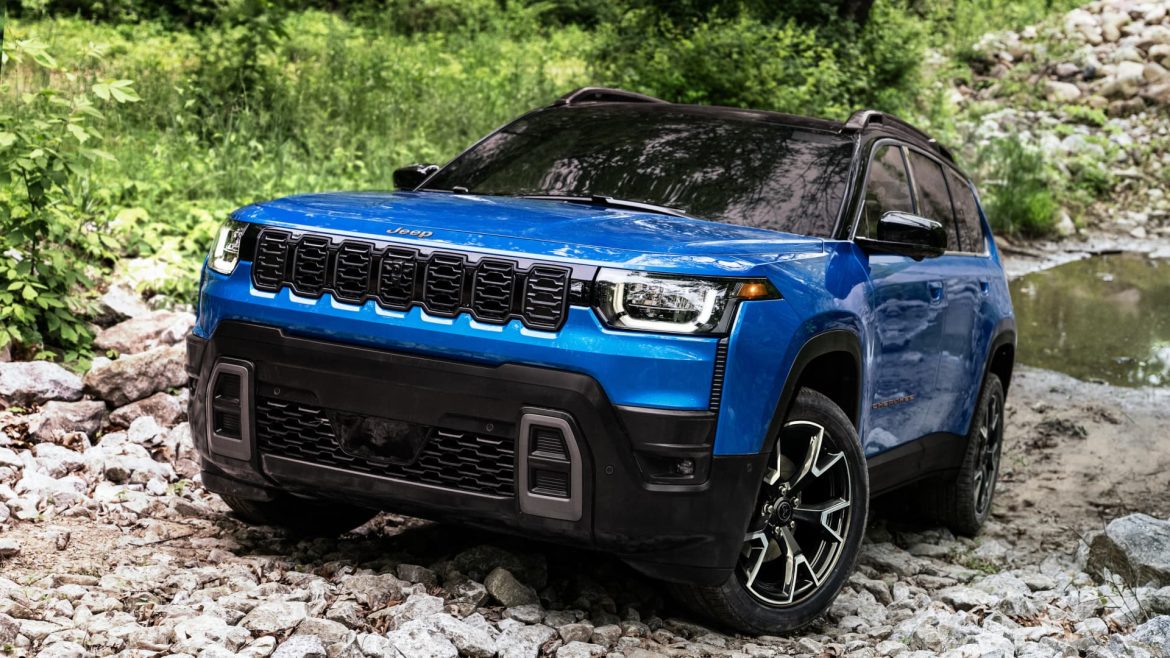The Revival and Reinvention of the Jeep Cherokee: A Deep Dive into Its 2026 Reintroduction
Jeep’s Cherokee, an iconic model in their SUV lineup, had ceased production in 2023, leaving a gap in the midsize SUV market. The brand’s eagerly awaited decision to revive the Cherokee in late 2025, with a bold redesign and a strong emphasis on electrification, marks a pivotal moment for Jeep. This report explores what is known about the upcoming 2026 Jeep Cherokee replacement, focusing on design, powertrain options, technological advancements, market positioning, and its potential role in Jeep’s broader brand revival.
—
Design Evolution: From Familiarity to Modern Robustness
The 2026 Jeep Cherokee emerges with a noticeably bigger and boxier body compared to its predecessor. This redesign signals a departure from the curvier aesthetics of earlier models, aiming to evoke a more muscular and rugged appearance that resonates with Jeep’s heritage of off-road prowess.
This shift towards a brawnier silhouette not only aligns with contemporary SUV trends but also positions the Cherokee successor as a robust and versatile player between Jeep’s compact Compass and the larger Grand Cherokee. With an expected increase of approximately 6.5 inches in wheelbase and 11 inches in length, the new Cherokee promises enhanced interior space and better road presence.
—
Powertrain and Electrification: Hybrid at Launch, Combustion Engines to Follow
One of the most significant aspects of the 2026 Cherokee is its powertrain lineup, reflecting Jeep’s commitment to electrification without abandoning traditional internal combustion engine (ICE) options:
– Hybrid Powertrain: Confirmed by former Jeep CEO Antonio Filosa and company releases, the new Cherokee will debut with a hybrid model. The hybrid system aims to balance power, efficiency, and off-road capability, simultaneously reducing emissions.
– Gasoline Variants: Alongside hybrids, the Cherokee will offer conventional gasoline engines at launch. Spy shots have confirmed models will retain visible exhaust systems, reinforcing the continued presence of ICE variants.
– Future Electric Possibility: While the initial release does not include a fully electric (EV) version, the platform—the Stellantis STLA Large architecture—supports all-electric configurations. This versatility suggests electrified variants may be introduced depending on market demand.
This powertrain versatility echoes Jeep’s recent approach with models like the Grand Cherokee 4xe plug-in hybrid, which combines traditional ruggedness with advanced electrification. The integration of hybrid technology in the Cherokee also syncs with Jeeps’ broader electrification strategy aiming to offer more sustainable off-road vehicles.
—
Technological Features and Off-Road Capability
Although detailed specs are still emerging, early insights indicate the new Cherokee will focus on both technology and capability:
– Waterproof Battery Systems: Inspired by features like those in the Grand Cherokee 4xe, the new Cherokee’s hybrid battery could include highly durable seals designed to handle water crossings up to 24 inches, promising robust off-road endurance in wet conditions.
– Platform Benefits: Building on the STLA Large platform used by larger SUVs like the Wagoneer S and the upcoming Jeep Recon, the new Cherokee is expected to benefit from improved chassis rigidity, modular electrification hardware, and advanced driver assistance systems.
– Connectivity and Safety: While specifics await reveal, Jeep’s pattern suggests inclusion of comprehensive infotainment upgrades, connected vehicle features, and modern safety technology to match competitors in the midsize SUV segment.
—
Market Positioning and Pricing Considerations
The reintroduction of the Cherokee aims to fill a critical spot in Jeep’s SUV portfolio:
– Segment Placement: Nestled between the smaller Compass and the larger Grand Cherokee, the 2026 Cherokee intends to capture buyers seeking a midsize, versatile SUV with hybrid efficiency and Jeep durability.
– Competitive Landscape: The Cherokee will compete with popular SUVs like the Toyota RAV4, Honda CR-V, Subaru Forester, and Chevrolet Equinox, where hybrid models are increasingly common. Jeep’s off-road legacy and hybrid technology may provide it an edge in this crowded marketplace.
– Pricing Outlook: Previous Cherokee models started around $30,000; however, Jeep has faced affordability challenges amid rising costs. The new Cherokee’s pricing will likely reflect added technology and electrification, potentially positioning it at a similar or slightly higher starting point while striving for value through features and capability.
—
Brand Strategy and Future Impact
Jeep anticipates the Cherokee replacement to play a pivotal role in revitalizing the brand:
– Brand Turnaround: The Cherokee’s comeback is expected to help Jeep navigate recent sales challenges linked to vehicle affordability and shift toward electrification.
– Sustainability Commitment: Incorporating hybrid powertrains signifies Jeep’s direction toward sustainability without compromising its core values of adventure and rugged performance.
– Expanding Electrified Lineup: The Cherokee joins a growing family of electrified Jeep vehicles, including the Grand Cherokee 4xe and the Recon, reaffirming the brand’s ambition to lead in plug-in hybrids and eventually electric SUVs.
—
Conclusion: A New Chapter for a Legendary SUV
The impending launch of the 2026 Jeep Cherokee represents more than just a model revival—it’s a strategic reinvention blending Jeep’s storied off-road toughness with modern electrified technology. With a bolder design, advanced hybrid powertrain options, and smart integration of rugged features and contemporary comforts, the new Cherokee is primed both to meet evolving consumer demands and to reinforce Jeep’s place in the highly competitive midsize SUV market. As it arrives in late 2025, this fifth-generation Cherokee stands ready to reconnect with fans old and new, charting a fresh course toward a sustainable and adventurous future.





